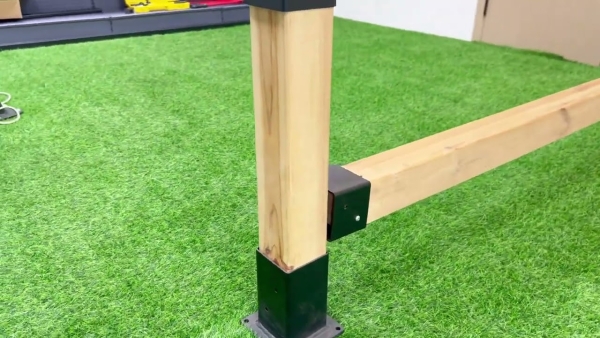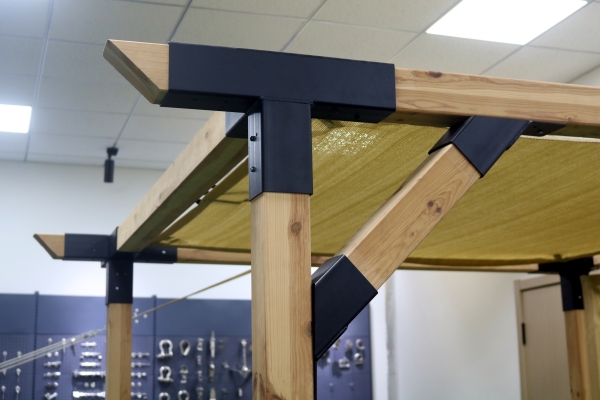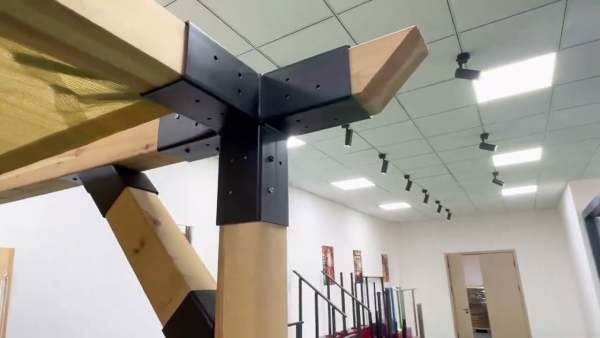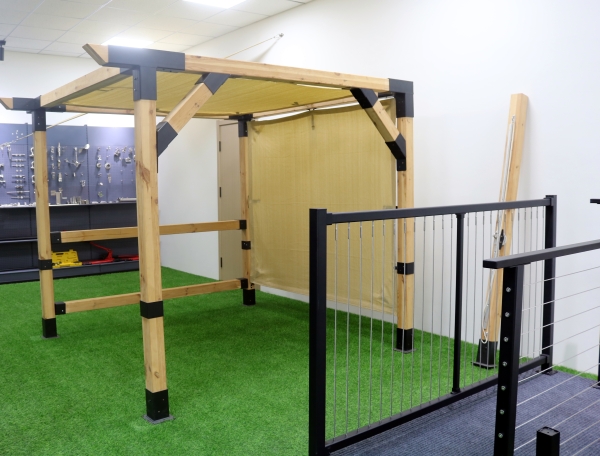Table of Contents
Benefits of Adding a Wooden Pergola to Your Outdoor Space
Designing a wooden pergola for outdoor spaces can bring numerous benefits to your property. Pergolas are versatile structures that can enhance the aesthetics of your outdoor space while providing functional benefits as well. In this article, we will explore the various advantages of adding a wooden pergola to your outdoor space.
One of the primary benefits of a wooden pergola is its ability to create a defined outdoor living space. By adding a pergola to your backyard or garden, you can designate a specific area for dining, lounging, or entertaining. This can help to organize your outdoor space and make it more functional for various activities.
In addition to creating a defined outdoor living space, a wooden pergola can also provide shade and protection from the elements. The slatted roof of a pergola can help to filter sunlight and provide relief from the heat on hot summer days. This can make your outdoor space more comfortable and enjoyable for relaxing or entertaining.
Furthermore, a wooden pergola can add value to your property. The addition of a pergola can enhance the overall aesthetic appeal of your outdoor space, making it more attractive to potential buyers if you ever decide to sell your home. A well-designed and well-maintained pergola can increase the curb appeal of your property and make it stand out from others in the neighborhood.
Another benefit of adding a wooden pergola to your outdoor space is the opportunity for customization. Wooden pergolas can be designed and built to suit your specific needs and preferences. You can choose the size, shape, and style of the pergola to complement your existing outdoor decor and landscaping. This level of customization allows you to create a unique and personalized outdoor space that reflects your individual taste and style.
In addition to the aesthetic and functional benefits of a wooden pergola, these structures can also provide environmental benefits. Pergolas can help to create a more sustainable outdoor space by providing shade and reducing the need for artificial cooling methods. By using natural materials like wood for your pergola, you can minimize the environmental impact of your outdoor living space.
Overall, designing a wooden pergola for your outdoor space can bring a variety of benefits. From creating a defined outdoor living space to providing shade and protection from the elements, pergolas offer both aesthetic and functional advantages. By customizing your pergola to suit your specific needs and preferences, you can create a unique and personalized outdoor space that enhances the overall value of your property. Consider adding a wooden pergola to your outdoor space to enjoy these benefits and more.
Tips for Designing a Functional and Stylish Wooden Pergola
Designing a wooden pergola for outdoor spaces can be a rewarding project that adds both functionality and style to your backyard. Pergolas are versatile structures that can provide shade, privacy, and a sense of enclosure to outdoor spaces. When designing a wooden pergola, there are several factors to consider to ensure that it is both functional and stylish.
One of the first things to consider when designing a wooden pergola is the size and shape of the structure. The size of the pergola should be proportional to the size of the outdoor space it will be placed in. A pergola that is too small may look out of place, while one that is too large may overwhelm the space. The shape of the pergola should also complement the overall design of the outdoor space. A rectangular or square pergola may work well in a formal garden, while a curved or irregularly shaped pergola may be more suitable for a more naturalistic setting.
Another important consideration when designing a wooden pergola is the type of wood to use. Cedar, redwood, and pressure-treated pine are popular choices for outdoor structures due to their durability and resistance to rot and decay. When selecting wood for a pergola, it is important to choose a species that is suitable for outdoor use and that will weather well over time. It is also important to consider the finish of the wood, as a stained or painted pergola can add color and visual interest to the structure.
In addition to size, shape, and wood type, it is important to consider the design of the pergola in relation to its function. A pergola can be used to define an outdoor living space, provide shade for a seating area, or create a focal point in the garden. The design of the pergola should reflect its intended use and enhance the overall design of the outdoor space. For example, a pergola with a lattice roof can provide dappled shade for a dining area, while a pergola with solid roof panels can provide more complete shade and protection from the elements.
When designing a wooden pergola, it is also important to consider the placement of the structure in relation to other elements in the outdoor space. A pergola should be placed in a location that takes advantage of views, provides privacy, and enhances the overall flow of the space. It is important to consider how the pergola will interact with existing landscaping, hardscaping, and other outdoor structures to create a cohesive and harmonious design.

In conclusion, designing a wooden pergola for outdoor spaces requires careful consideration of size, shape, wood type, design, and placement. By taking these factors into account, you can create a functional and stylish pergola that enhances the beauty and usability of your outdoor space. Whether you are looking to create a shady retreat for outdoor dining, a cozy nook for reading and relaxation, or a striking focal point for your garden, a wooden pergola can be a versatile and attractive addition to your outdoor living area.







